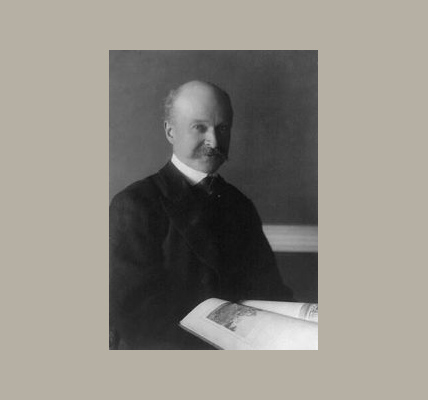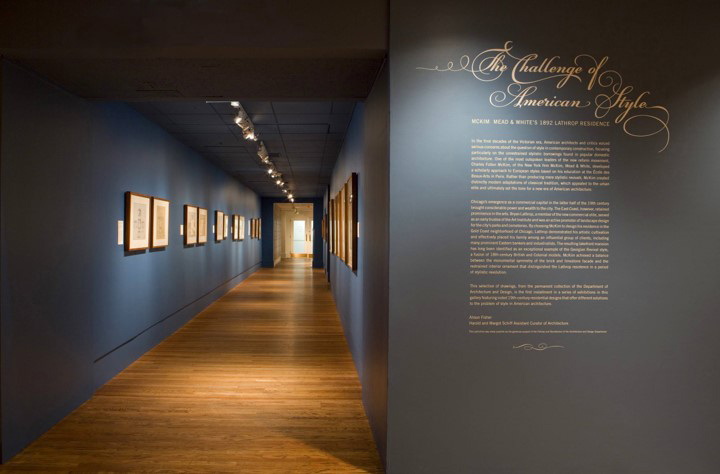Charles Follen McKim, Architect
Charles Follen McKim (1847-1909) was the son of a leading figure in the abolitionist movement. Not an outstanding student, he attended Harvard for a year. Then, following in the footsteps of H. H. Richardson and Richard Morris Hunt, he convinced his parents to send him to study architecture at the École des Beaux-Arts in Paris. In 1870 he began his career as a draftsman for Richardson in New York. By 1879 McKim, Mead & White was established, working on significant residential projects for society’s elite and major civic projects in Newport, Boston, and New York.
Daniel H. Burnham, the director of works for the World’s Columbian Exposition of 1893, brought McKim and several other East Coast, Beaux-Arts trained architects to Chicago to design individual buildings and the plan for the main exhibition grounds of the fair. Many considered McKim’s Agricultural Building the most beautiful.
The fair’s neoclassical design was enormously popular and played a large role in the subsequent City Beautiful Movement in architecture and planning which held sway in American cities for over thirty years. Chicago architect Louis Sullivan, of course, disapproved of the classical taste and championed what was later to become the vibrant Chicago school of architecture.

Architect Charles Follen McKim

McKim, Mead, and White, Parlor Elevation, 1892. The Art Institute of Chicago
While working in Chicago, McKim met real estate developer Bryan Lathrop and accepted the commission to build a house for him and his wife Helen Aldis Lathrop. Lathrop House, now home of The Fortnightly of Chicago, was called “one of the finest examples of Georgian Revival architecture in the country” in the City of Chicago’s 1974 Landmark citation . . . although it could also be said to be one of the only pieces of Georgian architecture in the city. McKim focused on every detail both inside and outside, including a design for a pool cue rack and different designs for each of eleven fireplace mantels.
The dignified, classical style of the house contrasted with the eclectic style that was prevalent at the time. McKim became one of the most outspoken leaders of the reform movement to overthrow the old, jumbled hodgepodge, which contemporary critics called “riots of ugliness.” In scholarly fashion, he and his partners had traveled through New England in 1876 to study, draw, and measure Colonial buildings. Mead later said that “as a firm I’m sure we were the first exponents of Colonial Renaissance in the country.”
McKim, Mead & White became the leading architectural firm of its time. Highlights of the work for which McKim himself is best known include the renovation of the White House and the Plan of 1901 for the park system of Washington, D.C. In New York he designed the Century, University, and Harvard Clubs; the Pierpont Morgan Library; the Columbia University campus; and the Pennsylvania Railway Station. In Boston, he designed the Boston Public Library and Harvard’s Department of Architecture building; and in Newport, the Newport Casino.
The Art Institute of Chicago has twice exhibited McKim’s work—first, a memorial exhibition of his drawings in 1910. A century later, Alison Fisher, Schiff Assistant Curator of Architecture, curated “The Challenge of American Architecture: McKim, Mead & White’s 1892 Lathrop Residence.”


